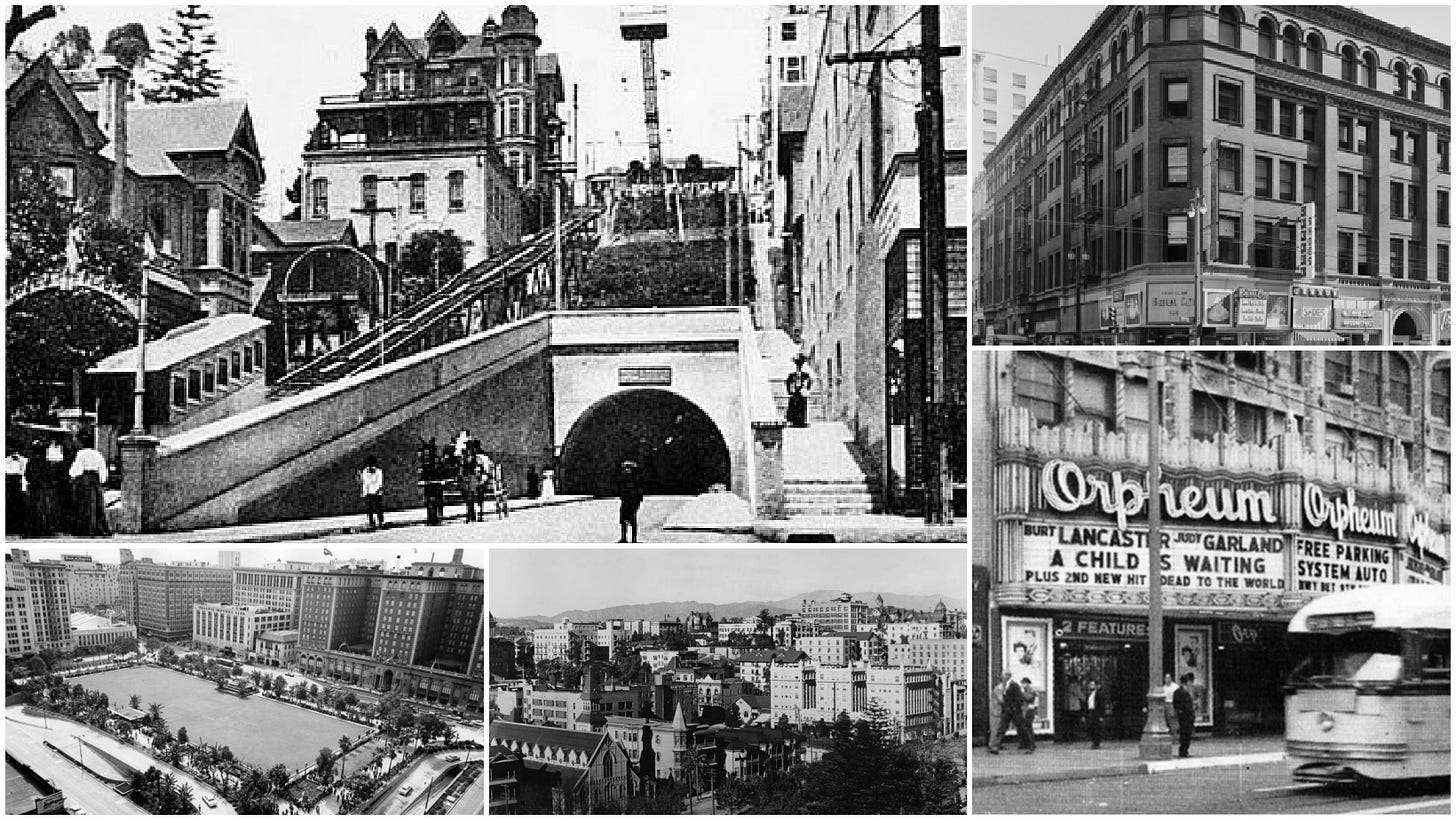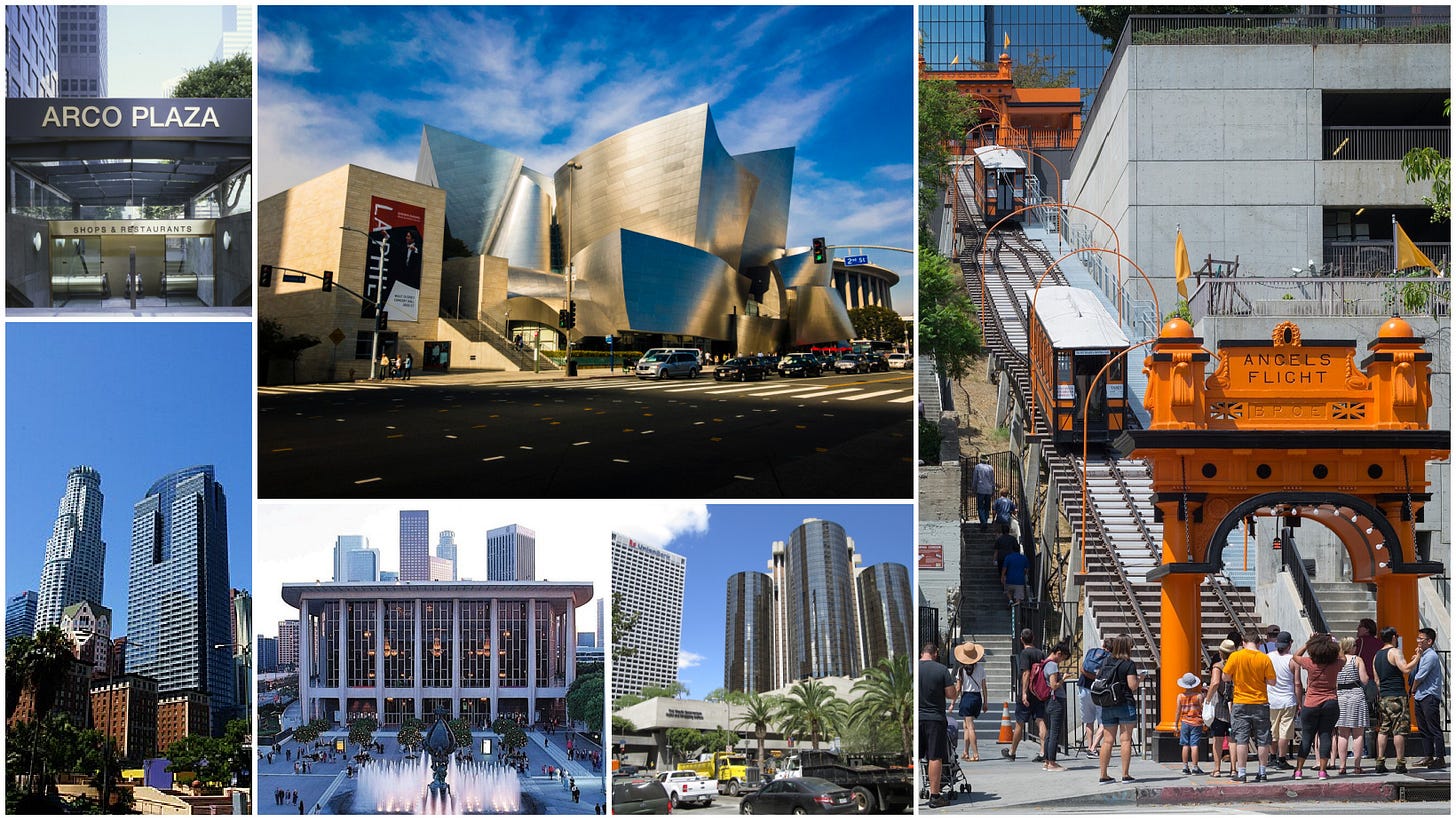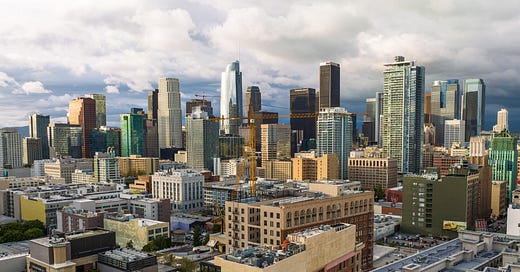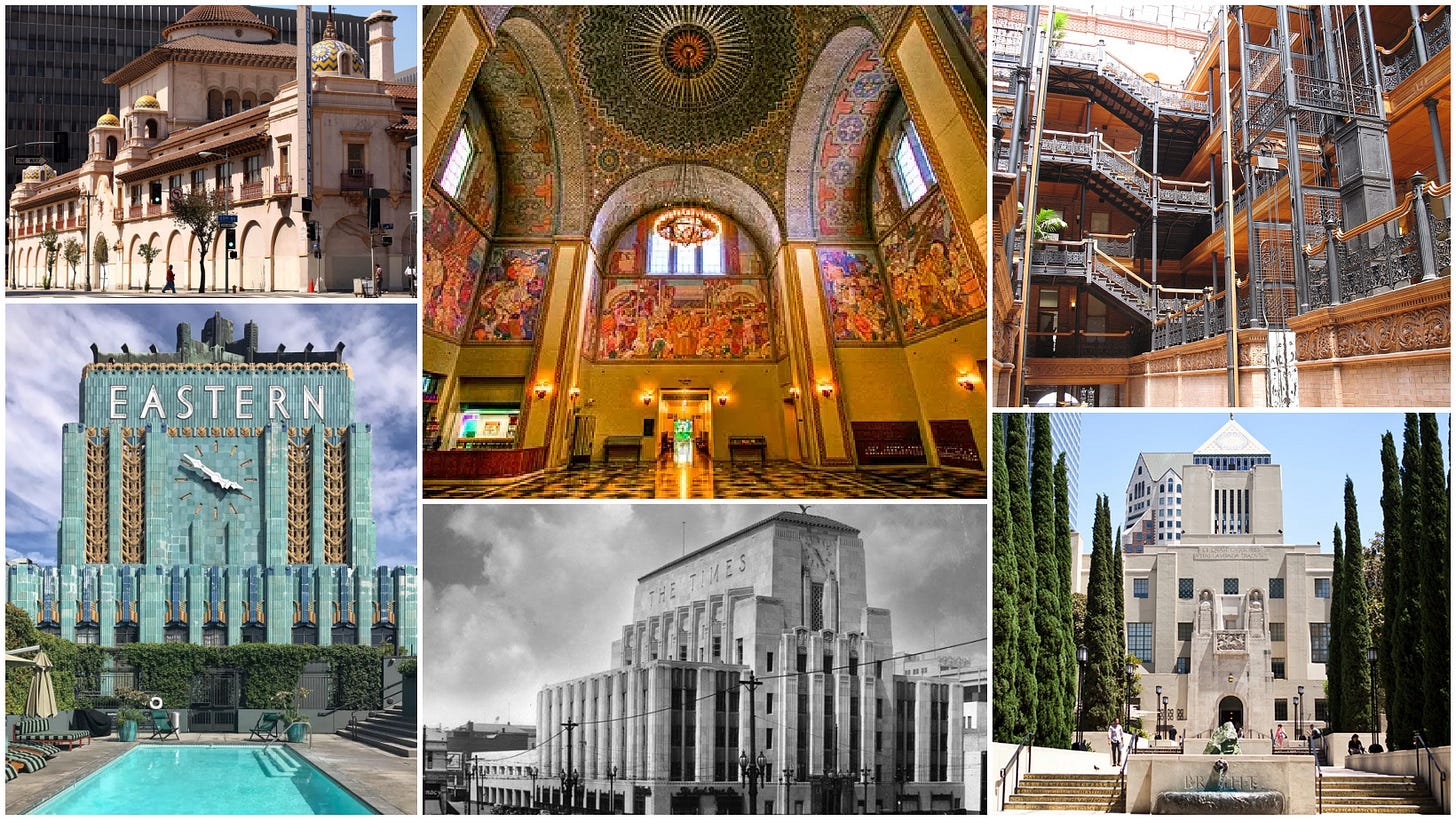Downtown Los Angeles is Unique Among American Cities
Downtown Los Angeles is a unique example of rehabilitating an economic core. In the late 1960s / early 1970s, a new downtown for Los Angeles moved about a mile northwest of the old downtown. It was a planned move to restore the economic power of Los Angeles. The old downtown centered along Broadway was being abandoned and run down, and the new area was sparkly and modern. Why?

The Economic Rise and Fall of the Old Downtown
Downtown Los Angeles was a dynamic area. In its early days, downtown LA was a bustling hub of industry and commerce. The late 19th and early 20th centuries saw the area's rapid development, spurred by the arrival of the railroads and the establishment of key businesses.
During this period, downtown LA flourished with the construction of grand buildings, thriving retail stores, and booming businesses. Landmarks such as the Bradbury Building, the Los Angeles Theater, and the iconic Angels Flight funicular came to symbolize the prosperity of the area. This vicinity became the heart of the city's commercial and banking activities, with Spring Street earning the moniker "Wall Street of the West" due to the concentration of banks and financial institutions.
However, as the mid-20th century approached, downtown Los Angeles began to decline. Businesses followed the population, seeking new opportunities in the burgeoning suburbs. Downtown LA became crime-ridden and run down.
However, many empty old buildings were kept alive as movie locations. Old banks, ticket offices, theaters, and flop houses were rented to studios. It was better to rent these spaces to pay to tear them down. The entertainment business was the most significant reason old downtown LA was not razed. Old downtown can be seen in hundreds of movies from Double Indemnity to LA Confidential to Kiss, Kiss, Bang Bang.
The Movement to Bunker Hill
As downtown Los Angeles faced economic challenges, the need for revitalization became critical. This led to a significant urban redevelopment project to enliven the downtown area. One of the most notable parts of this project was the movement towards Bunker Hill.
Bunker Hill was originally a prestigious residential neighborhood that had deteriorated over the years. By the 1950s, it had become a neglected area populated by aging buildings and a dwindling community. City planners and developers recognized its potential and envisioned transforming Bunker Hill into a vibrant center for business and culture.
The redevelopment of Bunker Hill began in earnest in the 1960s. The city cleared old structures and built modern high-rises and public spaces. This transformation was intended to attract businesses, residents, and tourists back to the heart of Los Angeles.
Key developments in Bunker Hill included the construction of the Music Center, which consisted of the Dorothy Chandler Pavilion, the Ahmanson Theatre, and the Mark Taper Forum. These became cultural pillars of the city - and home of the Academy Awards for decades. The area also saw the arrival of prominent office buildings such as the ARCO Plaza (now known as City National Plaza) and the Wells Fargo Center. The creation of Grand Park further enhanced Bunker Hill's appeal, offering a green oasis amid the urban landscape.

The Movement of Businesses to New Downtown
With the development of Bunker Hill, businesses began to shift from the old downtown to this emerging area. The allure of modern facilities, a revitalized environment, and the promise of renewed economic activity drew numerous companies to relocate their offices.
Financial institutions, law firms, and corporate headquarters were among the first to move to Bunker Hill. The presence of state-of-the-art buildings provided the amenities and infrastructure that contemporary businesses required. This migration established Bunker Hill as the new epicenter of downtown Los Angeles.
Developing high-end residential complexes attracted professionals who sought to live close to their workplaces, further boosting the area's economic and social vibrancy. The influx of residents and the concentration of businesses led to the establishment of new retail outlets, restaurants, and entertainment venues, creating a flourishing ecosystem. This was not always a smooth transition. Many of the early residences were left unsold. At one point, USC rented some of them as student housing.
This shift did not occur without challenges. The transition from the old downtown to Bunker Hill required significant investment and coordination between the public and private sectors. The demolition of historic buildings and displacement of existing communities were contentious issues. Nonetheless, the overall impact was transformative, positioning Bunker Hill as a central component of modern downtown Los Angeles.
Reemergence of Old Downtown
By the 1990s, younger generations longed for a walkable and compact area, and the old downtown fit the bill. Many of the decades-old buildings were rehabilitated as condos and apartments. Smaller, niche stores and restaurants opened and served this population.
The city contributed by rehabilitating many older buildings owned by the city or rehabilitating them with loans guaranteed by public agencies.
The transformation of downtown Los Angeles is an interesting Case study, but not a model for most cities. Most cities work to revitalize the older housing and retail stock or replace them organically with new buildings.




